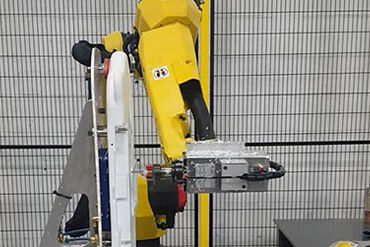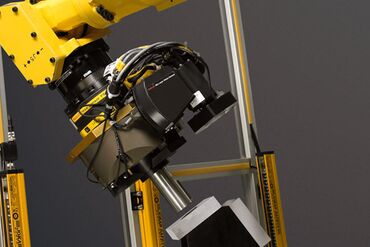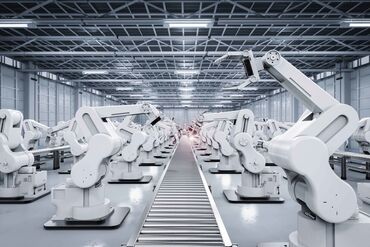Robotic Molding Process
Nov 24, 2023
Molding companies are realizing that the molding process can be enhanced through automation. Six-axis articulated robots are popular in injection molding such as loading components and assembling molded parts. Robots are able to blow molding, compression molding, injection molding, plastic molding, and transfer molding.

Advancements in Molding: The Integration of Robotics
The Evolution of Molding Processes with Robotics
Molding is the process of manufacturing by shaping pliable raw material using a rigid pattern. Some of the most common types of molding performed by a robot include blow molding, compression molding, injection molding, plastic molding, and transfer molding.
Diverse Applications of Robotics in Molding
Robotics are becoming increasingly popular in injection molding related processes, from loading components to finishing and assembling molded parts. Six-axis articulated robots are relied on to unload and process parts downstream from the molder, and can also perform secondary tasks like in-mold decorating, in-mold labeling, and automated insert loading.
Role of Robotics in Enhancing Molding Operations
Motoman’s Contribution to Molding
Motoman’s robots are being used for insert loading work cells for trimming and deburring due to the limitations of simple manipulators for extraction of molded parts. Six-axis robots can do more in a footprint. Some of Motoman’s molding robots include the DA9IC NX100, the HP3 NX100, and the SDA20D DX100.
KUKA’s Molding Automation Solutions
KUKA’s robots are being increasingly used for mold machine extraction applications. The part is removed from the injection molding machine, and then secondary applications like clip insertion, trimming, assembly, and packaging can also be completed, offering more flexibility. This allows end-users to accomplish more with a single investment. Some of KUKA’s molding robots include the KR 30, KR 150 L 110K.
Fanuc’s In-Mold Innovations
Fanuc has integrated in-mold labeling work cells, where the robot pulls down labels into the injection molding machine, becoming a permanent component of the part. Robots can also insert metal or plastic parts into a machine for the molding process. Some of Fanuc’s molding robots include the F‑200iA RJ3iB, the M‑710iC/50T R30iA, and the R‑2000iB/150U R30iA.
Robotic over-molding merges two materials to form one cohesive component. Robots are frequently used to over-mold automotive tail-light lenses, manufactured by injecting different color plastics into one machine.
Advancements in Molding: The Integration of Robotics
The Evolution of Molding Processes with Robotics
Molding, the manufacturing process of shaping pliable materials using a rigid frame, has seen significant advancements with the integration of robotics. Common molding methods like blow molding, compression molding, injection molding, plastic molding, and transfer molding are now increasingly automated.
Diverse Applications of Robotics in Molding
In injection molding, robotics have become a game-changer. From loading components to finishing and assembling molded parts, robots are enhancing efficiency and precision. Six-axis articulated robots, in particular, are crucial for unloading and processing parts, as well as performing secondary tasks such as in-mold decorating and labeling.
Role of Robotics in Enhancing Molding Operations
Motoman’s Contribution to Molding
Motoman’s robots, known for their versatility, are ideal for insert loading and work cells for trimming and deburring. They overcome the limitations of simpler manipulators, allowing for more operations within a smaller footprint. Key models include the DA9IC NX100, HP3 NX100, and SDA20D DX100.
KUKA’s Molding Automation Solutions
KUKA’s robots are increasingly used for mold machine extraction applications. They not only remove parts from the injection molding machines but also facilitate secondary operations like clip insertion and packaging. Robots like the KR 30 and KR 150 L 110K exemplify KUKA’s commitment to flexible, efficient molding solutions.
Fanuc’s In-Mold Innovations
Fanuc has pioneered in-mold labeling work cells, where robots integrate labels directly into the injection molding process. These robots can also insert metal or plastic parts into machines for molding, showcasing models like the F‑200iA RJ3iB and the R‑2000iB/150U R30iA.
Advanced Applications of Robotic Molding
Robotic over-molding, a process that merges two materials into a single component, is frequently used in applications such as automotive tail-light lens manufacturing. Additionally, robotic molding work cells can perform complex tasks like sonic and laser welding, significantly reducing cycle times in the molding industry.
Further, robotic molding work cells can also perform sonic and laser welding. The welder is placed on the end of a six-axis robot, which helps reduce cycle times, a crucial achievement in the molding industry.
Robots.com: Your Destination for Molding Robotics
Robots.com provides Integration-Ready Fanuc, KUKA, ABB, and Motoman molding robots. Contact us today online or at 877−762−6881 for more information.
Get in Touch for Customized Molding Solutions
For more information on how robotic molding can transform your manufacturing process, contact Robots.com. Our team is ready to assist you in selecting the ideal robotic system for your specific needs.
Related Articles
You might be also interested in:

- Featured
Latest Advancements in Material Cutting Robotics
Read about the latest technological advancements in robotic material cutting.

- Featured
Emerging 3D Vision Technologies for Industrial Robots
Learn about the emerging 3D vision technology that businesses are using for industrial robot applications.

- Featured
Most Popular Industrial Robotic Applications for 2021 and Projections
Explore the most popular application trends of 2021 and what to expect in the future.
Let's talk!
Request your quick quote today.
